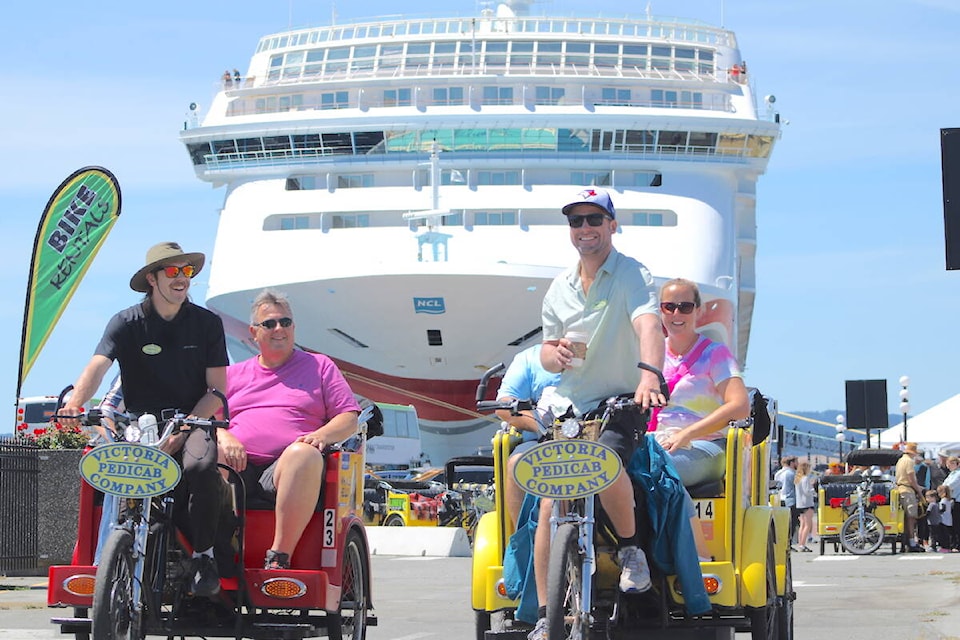Victoria’s harbour attractions have seen a great season so far as a record number of tourists are expected this year.
But while the Greater Victoria Harbour Authority sees the large influx of cruise ship visitors flock to Fisherman’s Wharf or sample the vendors in the Inner Harbour, it says those maritime travellers are packing their capital city experience into briefer stints these days.
Cruise ships are arriving in Victoria later than they have in previous years and staying for shorter periods as the industry adapts to a global push to drive down emissions and efforts to protect southern resident killer whales.
“What you’re seeing is ships trying to adjust their itineraries in order to meet the expectations of that global regulation, and the simple first tool is to slow down,” said Harbour Authority CEO Robert Lewis-Manning.
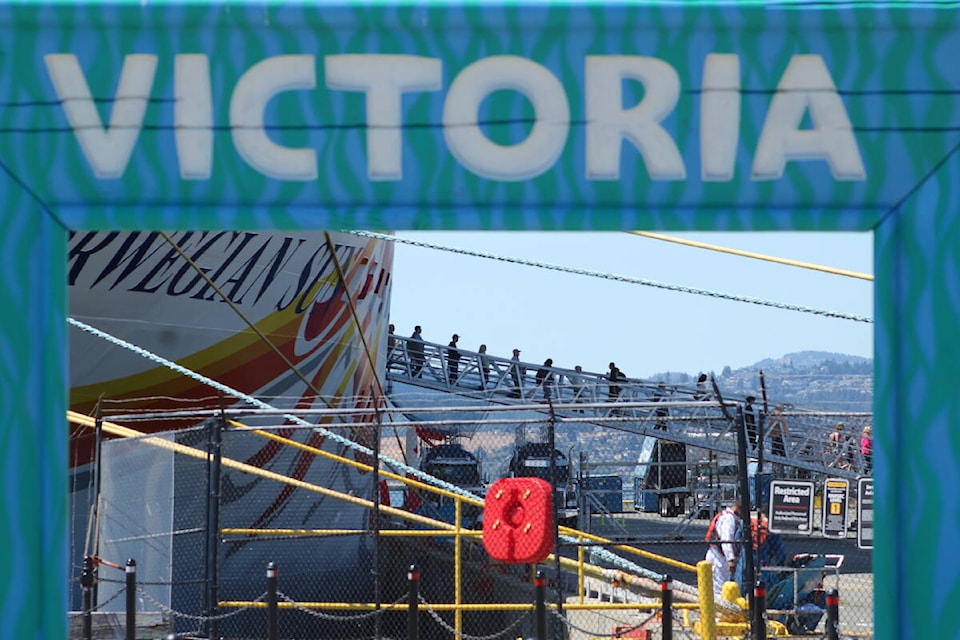
Canada is one of the 175 member states that make up the International Maritime Organization (IMO), which is responsible for developing standards for improving safety and preventing pollution from global shipping. In 2018, the United Nations agency set the interim goal of reducing greenhouse gas (GHG) emissions from shipping by 40 per cent below 2008 levels by 2030, and just this month amended the goal to reach net-zero by 2050.
Under the IMO regulations, large ships on Jan. 1 of this year had to start tracking their carbon intensity index (CII), which gives them a letter grade based on their emissions. Vessels will get their first CII rating next year and incrementally have to move toward an A-Grade by reducing their emissions through moves like using less-carbon-intensive fuels, reducing drag or using lower energy equipment.
With just half a year navigating the regulations, Lewis-Manning said they’re seeing ships complying by using the easiest emission-reducing option – slowing down.
“It’s very early days so I think ship owners – cruise and non-cruise – are trying to figure out what the long term looks like and it’ll likely mean some adjustments to itineraries in the long term,” he said. “So we’re in a very unpredictable period.”
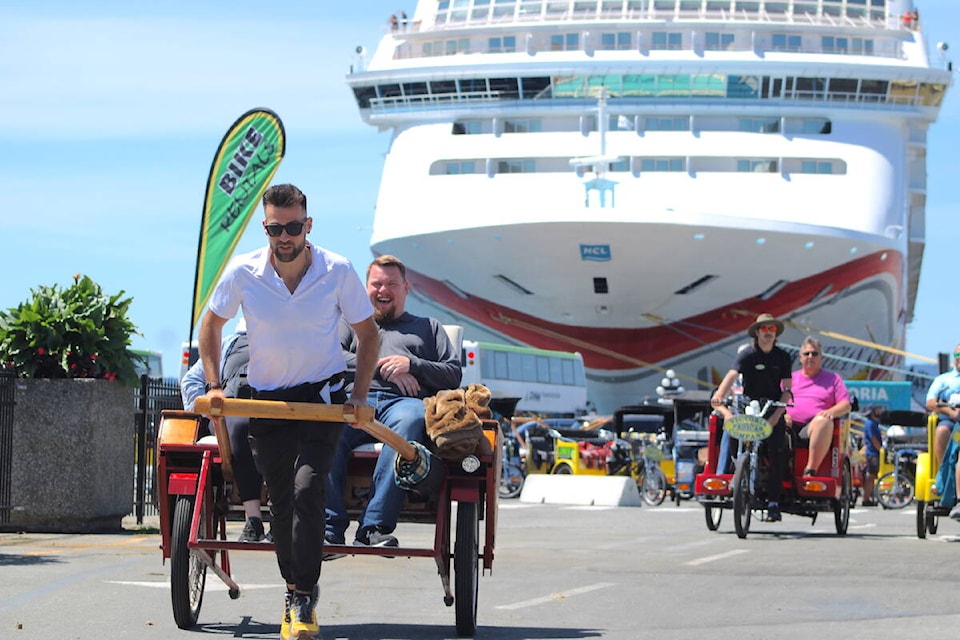
The Harbour Authority’s CEO said shorter stays aren’t good for the passenger experience as visitors want to stick around longer. But he said the Victoria port is well-positioned to help ships meet the increasingly stringent targets thanks to shore power coming to Ogden Point and B.C.’s ample access to clean hydroelectricity.
“We see that as a competitive advantage to be able to offer that capability because it will be regarded as a credit in that (CII) equation,” Lewis-Manning said, adding that the GHG-reduction route could help normalize stay lengths.
The Cruise Lines International Association (CLIA) told Black Press Media using slower speeds to reduce fuel consumption is one way operators are meeting IMO requirements, and that could cause them to adjust how much time they spent at certain ports in order to complete their overall itinerary.
Other measures include using improved propeller designs and special hull coatings to increase a ship’s efficiency, the world’s largest cruise industry trade association said.
“Cruise lines are implementing a range of strategies to improve efficiency and reduce emissions from cruise ships, including the interim step of utilizing lower-carbon LNG (liquified natural gas) in many new ships and are actively researching the use of alternative fuels such as bio-diesel, methanol, hydrogen and ammonia,” CLIA said.
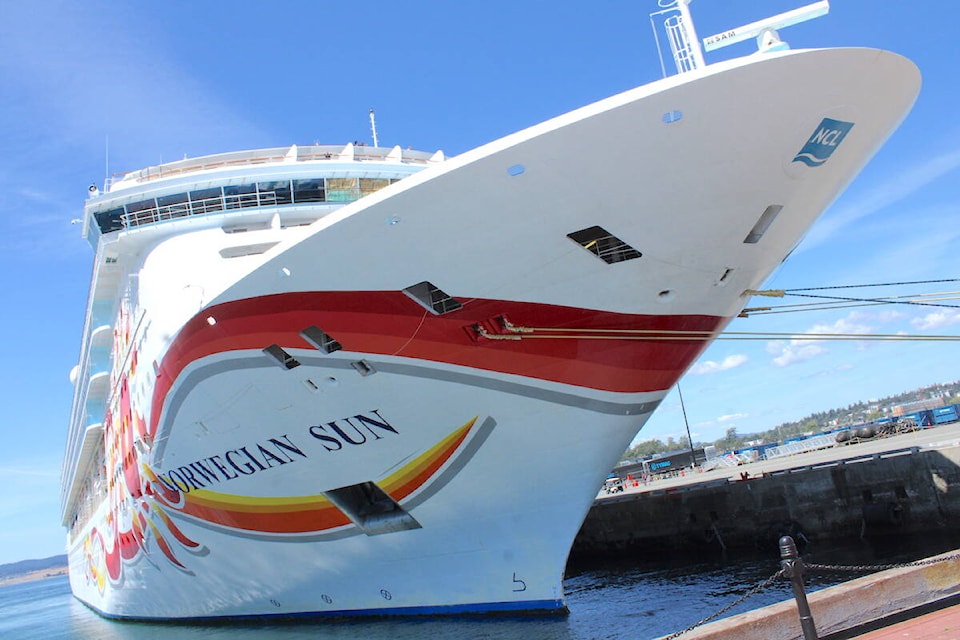
Another factor contributing to the shorter Victoria stays, Lewis-Manning said, is ships slowing down in and around the Strait of Juan de Fuca to reduce acoustic disturbances from propellers that affect whales and their feeding patterns.
In 2019, the marine industry and the federal government signed a five-year agreement on voluntary measures to protect southern resident killer whales by reducing the disturbances and collisions in the endangered species’ critical habitat.
The ECHO Program began with slowdown areas including the waterways just off Greater Victoria, like Haro Strait and Boundary Pass, meaning Ogden Point wasn’t affected. Lewis-Manning said the cruise industry has been impacted in recent years as the voluntary program expanded to include Swiftsure Bank and the Strait of Juan de Fuca.
The initiative sees thousands of ship operators slow down from early summer to mid-fall. The ECHO Program says it’s reduced underwater sound intensity by up to 55 per cent in the whales’ key foraging sites and lowered the risk of ship strikes by an estimated one-third since 2017.
Unlike Victoria, the Port of Vancouver is a start and end point for cruise lines, so it hasn’t seen any changes to the amount of time ships spend at the Lower Mainland site.
Still, each cruise ship visit generates $3 million in direct activity for the local economy, said Alex Munro, the Port of Vancouver’s senior communications officer.
As the port aims to be the most sustainable in the world, it currently offers shore power and rewards shipping lines with up to 75 per cent off their harbour fees if they take actions like using renewable energy to reduce their air pollution and installing propeller technologies that reduce underwater noise.
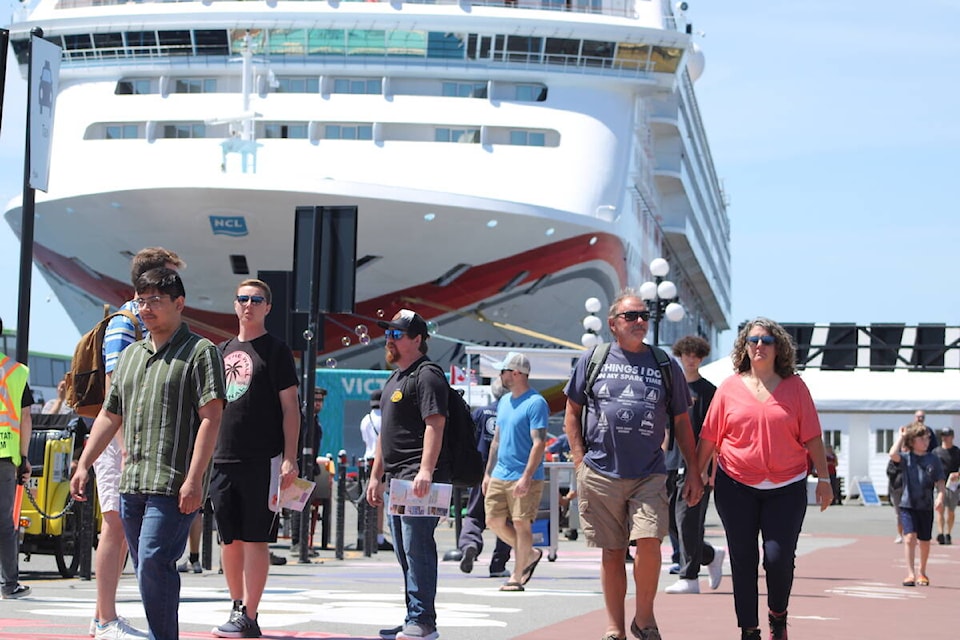
READ: B.C. providing $9M so cruise ships in Victoria can connect to shore power and cut emissions
